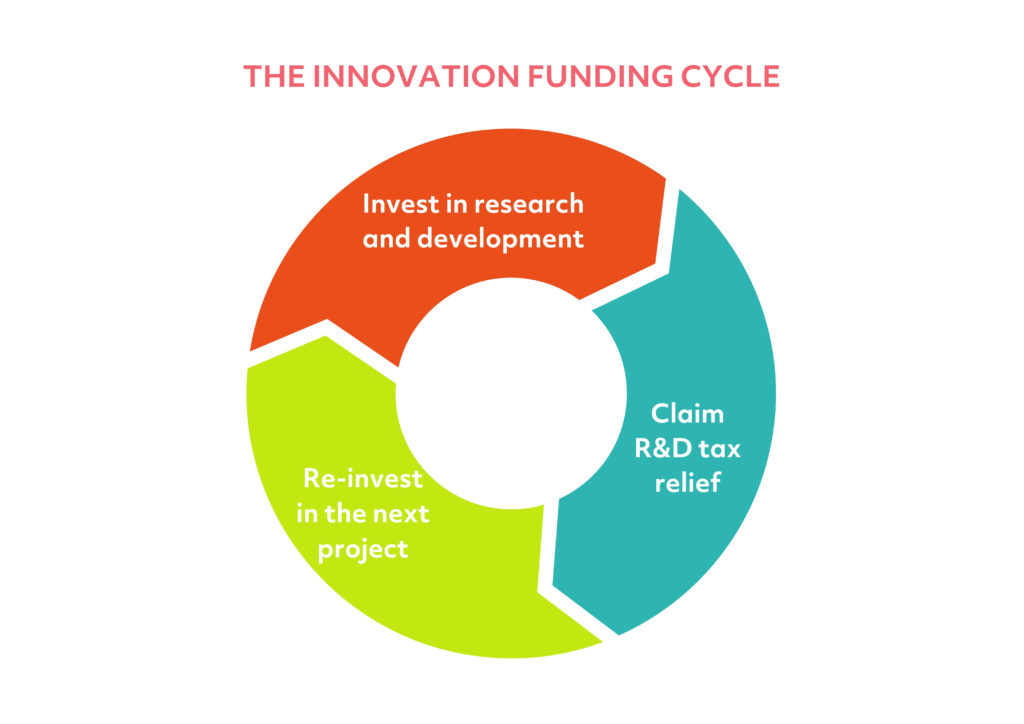Blog: Supercharging your post-pandemic recovery
With half of the UK population now having received their first vaccination against COVID-19, focus will begin to shift to how companies can maximise their opportunities in a post-pandemic landscape.
Core to any successful business strategy is access to capital, and in particular cash, to allow for investment in what your business needs to be highly competitive in this new world.
Keep reading to find out more about the UK’s best-kept financial reward scheme, how it should influence your growth strategy, and if it can help you supercharge your post-pandemic recovery.
Generating cash while investing in the future
Innovation is key to any business’s long-term survival and growth, and in order to innovate, time and effort need to be invested into research and development (R&D). Not only does investing in R&D help your business remain competitive and gain market advantages, it can also help bring additional cash into your business via R&D tax credits.
What is R&D?
R&D as defined by HMRC is about projects that seek advancement – scientific, or technological.
Developing new products or processes, improving existing ones, or adapting science or technology for new applications all count as R&D.
Companies that undertake qualifying R&D activities can claim tax relief on costs incurred during it – like staffing, software expenses, consumables, and subcontractors.
On average, SMEs making R&D tax relief claims receive £63,000 – as a saving on Corporation Tax, a cash credit, or a direct cash rebate.
Loss-making businesses can even use it to increase taxable losses, which is why it’s a good idea to investigate whether you undertake activities that you could claim on, regardless of your financial position.
Competitive advantage through R&D
More than using it to cover costs lost during the innovation phase, savvier companies are using funds received from R&D tax relief to actually grow their business and develop a competitive edge by investing in further innovation.

In a volatile post-COVID-19 environment it’ll be important to stay ahead of the competition, so prioritising investment in R&D now makes sense for those looking past the challenges of 2021.
Additional COVID-19 support measures
In the budget this March Chancellor Rishi Sunak announced a continuation of several financial help initiatives, as well as some new ones.
To help with employability, he confirmed the Coronavirus Job Support Scheme will continue to September; new incentives and flexibilities around hiring apprentices were revealed; and more support for the self-employed was promised.
For businesses, more Recovery Loan schemes, restart grants and business rates holidays were announced, all of which should help.
But hidden amongst the headlines were a few other interesting points you may have missed that are worth looking into if you’re serious about thriving post-pandemic.
Rewarding strategic alignment
In the Budget, Sunak announced a considerable amount of investment opportunities for projects related to delivering on the industrial strategy grand challenges. For example:
- £375 million for innovation in life sciences, quantum computing and cleantech
- £68 million to deliver first-of-a-kind long-duration energy storage prototypes that will reduce the cost of net zero
- £4 million for a biomass feedstocks programme to identify ways to increase the production of green energy crops
- £20 million for a UK-wide competition to develop floating offshore wind demonstrators
Outside of these specific projects, the industrial strategy itself is underpinned by a significant commitment to research and development; in fact, the ambition is for R&D investment to reach 2.4% of UK GDP by 2027.
Latest ONS stats put investment at 1.71% of UK GDP in 2018, equating to £37.1bn – so you can see how serious the government is about ramping up R&D.
Obviously, then, the question we’ve been asking our clients is: what part does R&D play in your recovery and subsequent growth strategies?
If your answer is that you’re not sure, if you’re struggling to understand how you can grow through R&D and innovation, or whether you already undertake activity that could qualify for R&D tax relief but need to know more about it, get in touch for a chat with an MPA expert today and we’ll put you on a successful post-pandemic path.
Get the funds, fast
HMRC are currently committed to turning claims for R&D tax relief around in just 28 days, so if you work with a specialist like MPA who is used to filing fast and accurate claims, you could receive this funding in a matter of months.
Find out more
